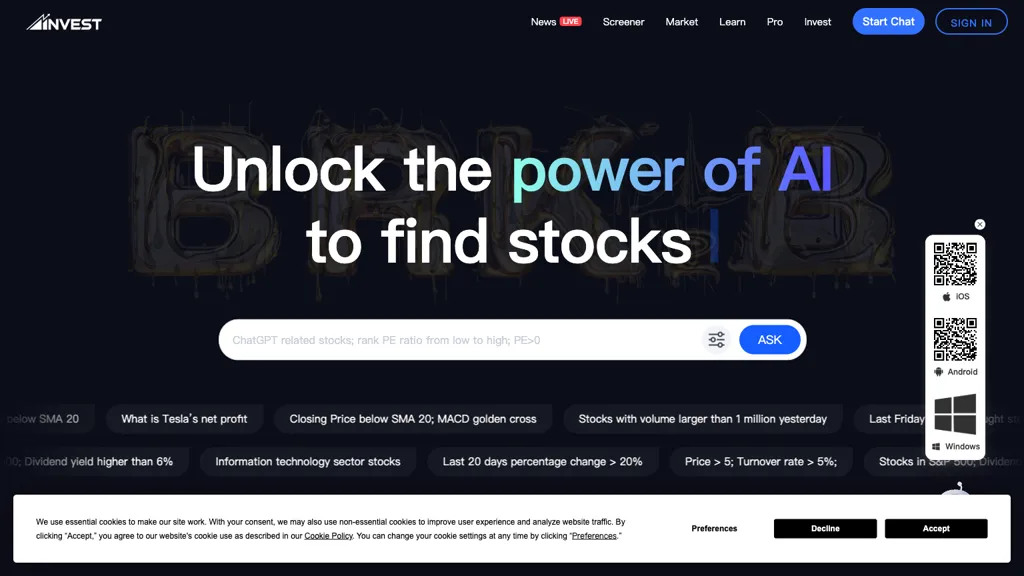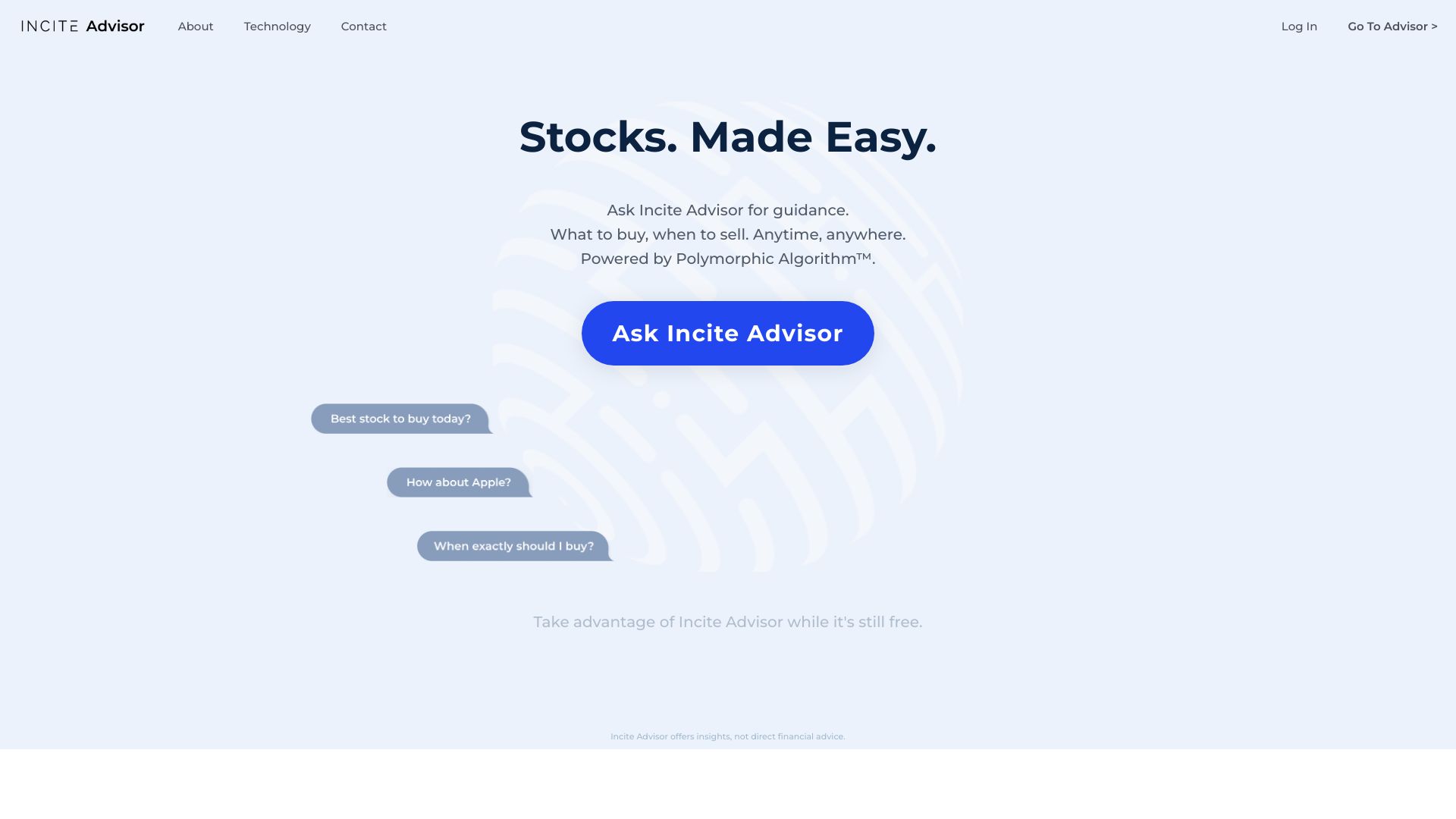Top 10 Tips For Evaluating The Cost And Cost Of Ai Platform For Predicting And Analyzing Stocks
Assessing the cost and pricing of AI analysis and stock prediction platforms is vital to ensure you get the most for your money and avoid hidden charges or unanticipated expenses. Pricing structures can vary significantly, and knowing exactly the value you're paying for is crucial to making an informed decision. Here are the top ten guidelines for evaluating costs and price:
1. Find out more about the pricing model
Subscription-based: Check if the platform charges an annual or monthly fee and what features are included at each tier.
Pay-per Use: Verify whether the platform charges per use (e.g. quantity of trades made or data requests, or even predictions).
Freemium model: Assess whether the platform provides the free version with limitations on features and fees for premium features.
2. Compare Pricing Levels
Check out the features offered by the various price levels, e.g. Basic, Professional Enterprise, Basic.
Scalability: Make sure the price tiers are aligned with your needs.
Upgrade flexibility: Find out whether you can easily upgrade or downgrade when your needs change.
3. Evaluate Hidden Costs
Data fees: Check if there are any additional charges for data that is premium (e.g. real-time data or advanced analytics).
Brokerage fees: Find out if there are any additional costs for the platform to integrate with brokers or to execute trades.
API usage: Assess whether there are additional costs to access APIs or high-frequency API usage.
4. Assess Free Trials and Demos
Trial period. Find platforms that offer trials or demos so that you can try their features out before committing.
Limitations of the trial: Check if the trial includes all features or if it has limitations regarding capabilities.
There are no-commitment options. Ensure that you are able to end the trial without being charged in the event that the service doesn't meet your needs.
5. Check out the latest discounts and offers
Discounts on annual subscriptions Comparing the monthly plan against an annual subscription.
Referral programs: Check whether you can earn credits or discounts by making others aware of the platform.
Bulk or Institutional Pricing: If your organization is a large one, you may want to ask about bulk or institutional pricing.
6. Assess Return on the investment
Cost vs. Value: Find out if the features and predictions of the platform justifies the cost. Do you have time saved or make better choices when trading?
Performance track record: Look at the platform's success rate or user feedback to gain an understanding of its ROI potential.
Costs of alternative: Compare the platform's cost against the costs of not using the platform (e.g. missed opportunities, time spent on manual analysis).
Review Policies on Cancellation and Refunds
The cancellation policy should be followed: Ensure that you have the ability to cancel the subscription without penalty, or with no hidden costs.
Refund Policy: Find out that your service allows an amount of money back if the subscription is not utilized.
Auto-renewal (automatic renewal) Learn whether you need to renew your subscription in a timely manner. Also, find out the procedure to decide to opt out.
8. Examine Transparency of Pricing
A clear pricing page Check whether the website has a pricing page which is precise, clear, and does not include any hidden fees.
Customer Support: Call Customer Service for clarification of any unclear pricing details or added costs.
Contract Terms: Learn about the long-term obligations and penalties by reviewing the contract terms.
9. Compare to Competitors
Features comparison Comparison of pricing and features of the platform to the competition to ensure that you're getting the best price.
Feedback from users: See what other people think about the platform to determine whether it's worth the price.
Market positioning: Examine the pricing and decide if you are receiving a platform within your budget.
10. Review the long-term costs
Price increases Look through the history of the platform to determine how often it has raised prices.
Additions to features – Check if the new features are part of your current plan or if an upgrade is necessary.
Cost for scaling The platform must be priced appropriately as your trading activities or data requirements increase.
Bonus Tips
Try multiple platforms. Compare the effectiveness and performance of various platforms by testing their capabilities during free trials.
Negotiate the price: If you are a frequent user or a part of a large organization You can inquire for discounts or special pricing.
Check out educational sources. A lot of platforms offer free educational materials or tools, which can be great additions to their core features.
Utilize these suggestions and you'll be able to assess the costs, pricing and the features offered by AI stock trading platforms. A high-quality trading platform can achieve the ideal balance between affordability and features, allowing you to maximize your success. Take a look at the recommended agree with for blog recommendations including chart ai trading assistant, ai trade, best AI stock, ai investment app, ai for stock predictions, chart ai trading assistant, options ai, market ai, AI stock trading bot free, best AI stock and more.

Top 10 Tips To Assess The Transparency Of AI stock Analysing Trading Platforms
Transparency is a factor to consider when considering AI platforms for prediction and trading in stocks. Transparency allows users to verify predictions, trust the platform and know the way it functions. Here are 10 tips for evaluating the authenticity of platforms.
1. AI Models explained in depth
Tip – Check that the platform provides a thorough description of the AI and algorithm models that are used to predict the future.
Knowing the technology behind it lets users evaluate its credibility.
2. Disclosure of data sources
Tips: Find out if the platform discloses which data sources are used (e.g. historical stocks, news and social media).
What's the reason? Knowing the sources of data will ensure that the platform uses credible and comprehensive data.
3. Performance Metrics Results and Backtesting
Tips – Search for transparent reporting regarding performance metrics such as accuracy rate, ROI and backtesting.
It will also allow users to assess the efficiency of the platform and also its previous performance.
4. Real-Time Updates and Notifications
Tip: Check to see whether there are any real-time updates, notifications, and trades about the platform.
What is the reason: Realtime transparency gives users continuous details about crucial actions.
5. Limitations and open communication
TIP: Check if your platform explains the limitations and risks of the trading strategies it uses and the predictions it makes.
The reason: Recognizing limits increases confidence and allows you to make better decisions.
6. Access for users to raw Data
Tip: Determine whether the AI model can be utilized to gain access to raw data or intermediate results, or both.
Why: Raw data is a great way to confirm the predictions of others and to conduct an analysis.
7. Transparency in Fees and Costs
Be sure to check the terms and conditions of any platform you are considering.
Transparent pricing is a good thing. It reduces the risk of unexpected expenses and boosts confidence.
8. Regular Reporting and Audits
Verify whether the platform publishes regular reports or goes through audits by third parties to confirm its effectiveness.
The reason: Independent verification improves the credibility of your business and increases accountability.
9. Explainability in Predictions
Tips: Check if the platform explains the specific ways in which recommendations or predictions are created (e.g. important features and decision trees).
Why? Explainability lets users to learn the reasoning behind AI-driven actions.
10. Feedback and Support Channels for Users
Tip – Check if the platform provides open channels for feedback and support from users, and if they respond transparently to their concerns.
The reason is that responsive communication indicates the commitment to transparency as well as user satisfaction.
Bonus Tip: Regulatory Compliance
Verify that the platform is in compliance with all financial regulations. It should also disclose its compliance status. This provides an extra layer of transparency.
By carefully evaluating these aspects it is possible to assess whether an AI-based stock forecasting and trading system is operating in a transparent manner. This allows you to make educated decisions and develop confidence in the capabilities of AI. See the top rated AI stock trader hints for blog examples including best ai for stock trading, how to use ai for copyright trading, ai software stocks, free AI stock picker, free AI stock picker, ai options, trading ai tool, best AI stocks, stock predictor, chart ai trading and more.
